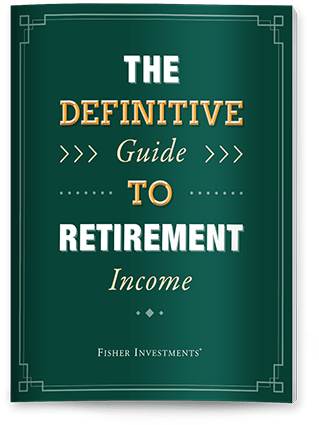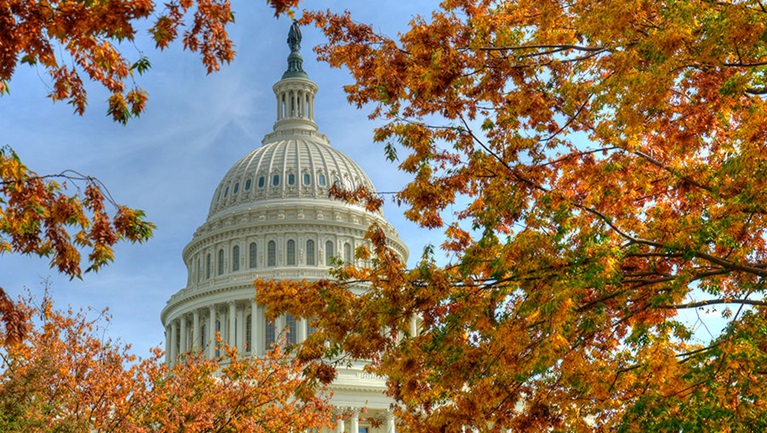Personal Wealth Management / Politics
‘Independent’ Shouldn’t Mean ‘Beyond Criticism’
The upside for investors from President Trump’s seemingly constant criticism of Fed head Jerome Powell.
This column touches on politics, so please note that MarketMinder favors no politician nor any party, assessing developments solely for their potential economic and/or market effects.
The Federal Reserve announced Wednesday it would hold the fed-funds target range unchanged at 4.25% – 4.50%. Ordinarily, this would be boring, likely making me grumble at the idea of writing a column on it. They didn’t do anything. But, boring as this may ordinarily be, many are already casting it as a declaration of Fed “independence” sure to ruffle President Donald Trump’s feathers. For months, Trump has called for lower interest rates—he did it again the same day—which many pundits see as encroaching on the Fed’s ability to deliver non-biased monetary policy. They claim this threatens markets from stocks to Treasurys, hyping it as a source of potential risk.
But this misses the point. Criticism of Fed decisions is one thing, no matter the source. It isn’t a realistic market risk. Actually encroaching on the central bank’s ability to make policy is another. Investors need to know the difference—and realize monetary policy is never perfect or unbiased—a fact this criticism may positively underline.
Throughout this year, we have explained more than once presidents don’t have the power to fire the Fed chair except for cause. “Cause” can mean many things, but policy disagreements don’t qualify. The Supreme Court upheld this notion rather explicitly in a May 22 ruling, citing the bank’s quasi-private legal structure. I won’t rehash that discussion here except to say firing the Fed head could encroach on the Fed’s independence. Not good, but also not likely.
Yes, yes, I know. People say Trump’s criticism of Powell—including that wonderful hard-hat photo op at the Fed’s renovation jobsite—is designed to influence policy. That is an opinion. A theory. And: There is literally no sign months of his criticism has done one single thing to Fed decisions at this point—except maybe delay a Fed rate cut as a comeuppance. Why would Powell sway to pressure now when he probably relinquishes his seat in under a year anyway?
As with many things Fed-related, though, there is an odd mythological air surrounding its “independence.” Many seem to paint Fed officials as dispassionate scientists, clicking buttons and pulling levers to “steer” the economy toward low inflation, healthy growth and low unemployment. They glowingly contrast Fed officials’ monotone, deadpan delivery of jargon-laden speeches with politicians, who must—by nature of their jobs—curry favor with the public.
Hence, pundits cast any effort by politicians to question their decisions in hushed terms of “interference.” Stories invoking memories of President Lyndon Baines Johnson physically threatening Fed Chair William McChesney Martin—or President Richard Nixon privately attempting to steer Fed Chair Arthur Burns, recorded on tape—rush to print. But publicly claiming rates are too high is a bit different than these private attempts to exert influence, whether via threat of violence or plain ol’ pressure.
Here is the thing many fail to appreciate: For all the talk of central bankers as technocrats, Fed heads are political animals. They are appointed and reappointed by presidents. They are confirmed by the Senate. They must play the game to get the role. Once in office, they may be able to make policy without much regard to politics, but the history of this is a little lacking. Former Fed Chair Paul Volcker is famously credited for breaking the late-1970s’ inflation by hiking rates without regard to the recessionary economic consequences. That is one example. Name another.
Here, I will help: Maybe the September 2008 decision to force Lehman Brothers to fail in the name of heading off “moral hazard” is a second. That is a maybe. And scoring that one in the “win” column for Fed independence would be rather a stretch, to put it rather mildly.[i]
Folks, the Fed, too, operates on biases. Those biases may not be Republican versus Democrat. They may be rooted more in how they were trained (or whom they trained under[ii]). Or confined to some very technical-sounding realm, like where they think the unproveable, non-quantifiable, non-accelerating inflation rate of unemployment (NAIRU) is. Or the equally unknowable natural rate of interest (R-star). Or the equally mystical potential economic growth. But those are biases! Opinions! Not facts. Jargon and technospeak don’t change that.
With that in mind, a question: When the Fed errs, which it has many, many times in its existence, who holds them accountable? Answer: No one. Again, the president can’t fire Fed Chair Jerome Powell on policy grounds. Voters can’t un-elect monetary policymakers (they never elected them anyway, naturally). And the cult-like following Fed officials seem to have gives them significant leeway among the press. Hence, you get weird phenomena like people lauding Powell’s Fed for cutting inflation without blaming them for starting it. It is like lauding an arsonist for being first to respond to the fire scene.
Even people who are skeptical of the Fed often grant them way too much leeway and authority. This is where public criticism of the Fed can serve a positive purpose—even if the president is the critic-in-chief, regardless of who that president is or which party they hail from. Critique is about the only avenue anyone has to question the sanity of monetary policy. Op-eds in The Wall Street Journal and its ilk are great. But I suspect Powell & Co. can easily slough them off. Many market participants won’t see them. A Trump tweet on social media? That is much more widely seen.
Anyway, if the Fed wishes to protect its independence and better shield itself from White House criticism, here is an idea. It is free (literally). It would add to the transparency the Fed so often claims to seek. And it would give investors much more concrete information to weigh policymakers’ logic. That proposal: End the rule sealing Fed meeting transcripts for five years. Make it far, far shorter. Six months maybe. I don’t know. But short.
Don’t be confused: The transcripts aren’t the meeting minutes. Those are whitewashed words the Fed polishes for public consumption—basically worthless. By contrast, the transcripts are primary evidence—the actual, word-for-word record of what participants said at each meeting. All the bad jokes. All the interruptions. All the commentary that didn’t age well (and some that did). They yield insights into the quality of analysis. The transcripts are how we know the Fed forced Lehman to fail by denying would-be suitors funding in September 2008, contradicting the self-congratulatory accounts of that timeframe Fed and other government officials penned later. The transcripts show officials frequently stressing over word choice, joking about recession pressures and exploring alternate forecasts that occasionally turned out more prescient than the stated views in pressers.
The words themselves won’t help investors much. They would still be coming out late and looking backward—the wrong direction if you are weighing markets. And it isn’t like there is hidden data in them—Fed officials routinely discuss data everyone sees. But releasing them closer to the Fed’s actual decisions could help shed more light and context on their choices—positively and negatively. We could now know, for example, why in the world Powell & Co. spiked money supply in 2020 amid lockdowns. We could see the bank’s unvarnished reactions to inflation’s burst in 2022. Today, we don’t have these insights. Why?
Releasing these notes sooner delivers transparency. Now, in granting it, the protective bubble guarding the Fed’s myth of infallibility or superiority may just burst. But, for investors, that may be the best possible outcome from Fed criticism.
[i] They were independent enough to eschew their role as lender of last resort, cut against the precedent they set months earlier and trigger a run on many banks, only to fall in line with administration thinking and take a back seat to the Treasury immediately thereafter.
[ii] This is an oblique reference to the fact virtually every major central banker in the world studied under the late Stanley Fischer.
If you would like to contact the editors responsible for this article, please message MarketMinder directly.
*The content contained in this article represents only the opinions and viewpoints of the Fisher Investments editorial staff.
Get a weekly roundup of our market insights
Sign up for our weekly e-mail newsletter.

See Our Investment Guides
The world of investing can seem like a giant maze. Fisher Investments has developed several informational and educational guides tackling a variety of investing topics.





